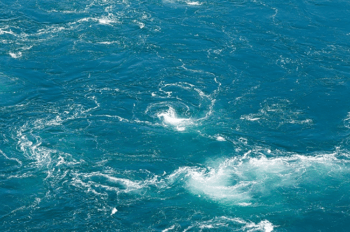Understanding Japanese Current Could Help Weather Predictions

The Kuroshio Current off the east coast of Japan is one of the world’s strongest currents, and like the Gulf Stream current in the Atlantic Ocean, is comprised of warm water. A team of international scientists, led by five researchers from Texas A&M University, have completed a detailed study of the Kuroshio Current and their findings could have an impact on predicting future weather patterns in the North Pacific sector and beyond.
Xiaohui Ma, Zhao Jing, Ping Chang, Xue Liu and Raffaele Montuoro of the Departments of Oceanography and Atmospheric Sciences at Texas A&M, along with colleagues from the Ocean University of China, the National Center for Atmospheric Research in Boulder, Colo., and the University of Kiel in Germany have had their work published in the current issue of Nature magazine.
Using computer models, the team found that Kuroshio Current, which stretches from the Philippines and past Japan, transports warm, tropical waters to high latitudes. The current is so strong that it produces significant eddies, swirling streams of water that directly affect ocean dynamic conditions.
“Current climate models today are not able to accurately represent the current and its eddies,” Chang explains.
“These eddies are very strong, like storms in the atmosphere. They contain great amounts of energy. Our study shows how the energy released from the ocean to the atmosphere can affect the simulation of Kuroshio Current, which can potentially impact prediction of weather patterns.”
The Kuroshio (meaning “black stream”) is also known as the Japan Current and it sustains key reef systems off the Japanese coast. It is at least 2,000 miles long and about 60 miles wide and is responsible for relatively mild conditions around Alaska’s southern coast and in British Columbia.
The eddies created from the current are a key component of the study.
“It is very important that we understand and represent the conditions of these eddies and their relationship to the current,” Chang adds.
“It is very likely that in doing so, we can have better predicting models for future weather patterns and even climate change,” he notes. “Winter storm predictions in this part of the world may depend on information from this region, so we need as much information as possible in formulating forecasts.”
University officials note the professors’ work underscores Texas A&M’s commitments to discovery and innovation that have positive impacts for the state, nation and world, in keeping with its “Lead by Example” comprehensive campaign.
The project was funded by the National Science Foundation and NOAA.
Media contact: Keith Randall, Texas A&M News & Information Services.





